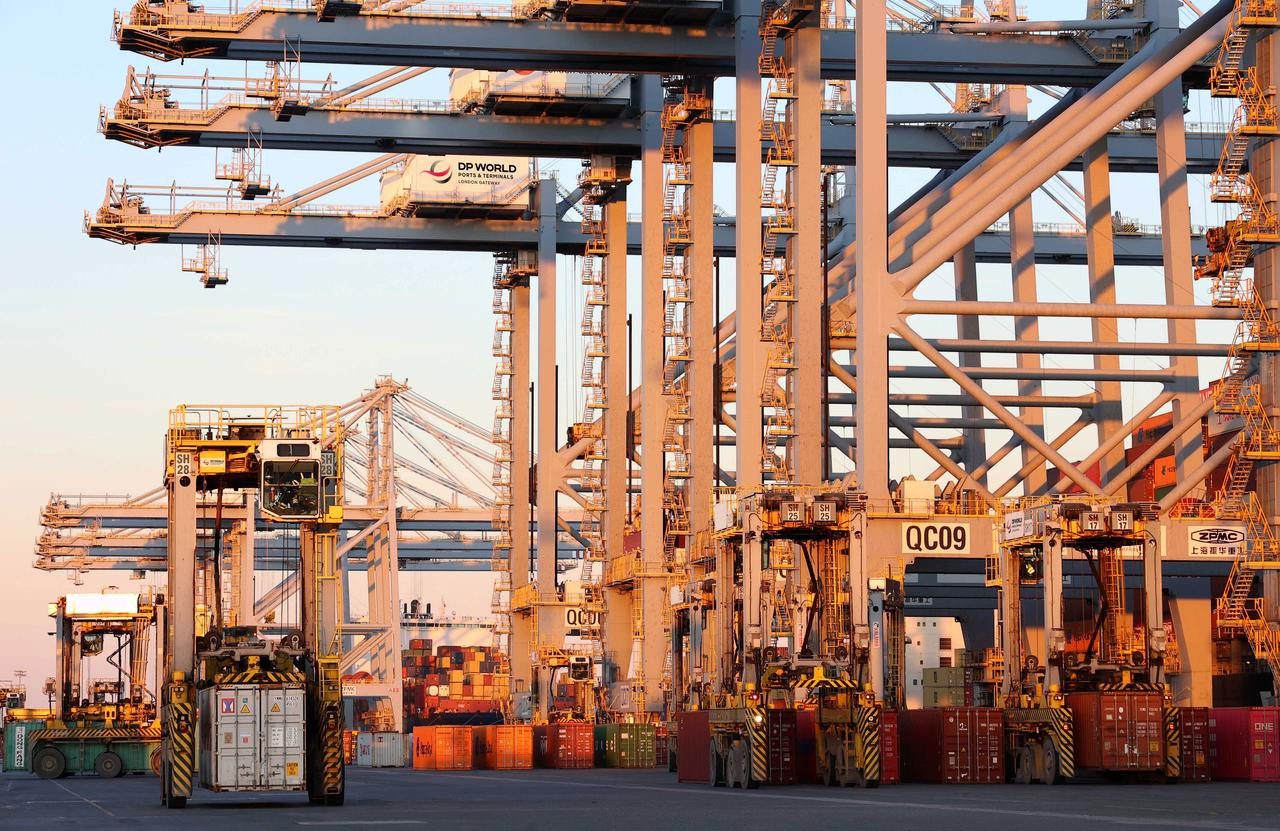Photo: Hanjin Shipping
By Kyunghee Park and Christian Wienberg
(Bloomberg) — Hanjin Shipping Co. is hardly a bellwether in the world of container movers. As lenders halt all support this week, the South Korean company is now emerging as a symbol of the slump that has plagued the industry since the global financial crisis.
Creditors led by Korea Development Bank will end their backing of South Korea’s largest container-shipping company, which may still need as much as 1.3 trillion won ($1.2 billion) in cash to roll over debt after losses in four of the last five years. Hanjin Shipping’s board is set to meet Wednesday to decide whether to apply for court receivership, the company said late Tuesday.
Hanjin’s woes show the container-shipping industry is still in bad health, limping from one exigency to another since the 2008 crisis brought trading to its knees. Helped by cheap loans, container lines have hung on even as freight rates to move sneakers to Barbie dolls from Asia to Europe and U.S. plunged. From A.P. Moeller-Maersk A/S to Hapag-Lloyd AG and France’s CMA CGM SA, companies have tried all — mergers, acquisitions and cost cuts — while demand revival remains elusive.
Heavy Losses
“We have been seeing some reorganization in the container industry and hopefully it can lead to fewer container lines with healthier balance sheets,” said Espen L. Fjermestad, an analyst at Fearnley Securities AS in Oslo, Norway.”It could be healthy for the industry as a lot of companies have been stimulated with outside money for a long time to still exist despite heavy losses.”
Headed for another year of losses, Hanjin Shipping has been trying to reschedule debt under a voluntary program led by creditors since May while rival Hyundai Merchant Marine Co. has been taken over by the creditors after meeting conditions, including adjustments in charter rates on vessels it leased from shipowners.
Hanjin Shipping said Monday that it could generate 1.27 trillion won in additional liquidity for the company. That included extending maturities of some debt with foreign lenders and charter rate adjustments with shipowners on vessels. It’s biggest shareholder, Korean Air Lines Co., also planned to provide 400 billion won to the shipping company.
Insufficient Plan
“Creditors found it difficult to accept Hanjin Shipping’s plan,” Korea Development Bank said. “The plan was insufficient and it’s uncertain whether the company could turn around.”
Hanjin Group – the parent with businesses from airlines to shipping to mineral water — said it will put in all efforts to revive the industry even if Hanjin Shipping were to apply for court receivership.
Hanjin Shipping is the world’s seventh-biggest shipping line by capacity and has a market share of 2.9 percent, according to Alphaliner, a maritime consultant.
Shares of the company plunged 24 percent to 1,240 won on Tuesday, the lowest closing price since December 2009, before trading was halted in Seoul. Hyundai Merchant surged 7.5 percent, the biggest gain in more than two months.
Mergers, Job Cuts
The global shipping industry has been operating at a loss since the end of 2015, and it’s set to lose about $5 billion this year as cargo rates fall amid an oversupply of vessels, according Drewry Maritime Research. That has prompted companies to consolidate, cut jobs and sell assets.
CMA CGM, the world’s third-biggest container shipping company, bought Singapore’s Neptune Orient Lines Ltd. for S$3.38 billion ($2.5 billion) this year in the industry’s biggest acquisition since 2005. Hapag-Lloyd and United Arab Shipping Co. said in June they agreed to merge to become the fifth-largest container shipping company. That comes after the German company agreed to buy the container business from Chilean rival Cia. Sud Americana de Vapores SA in 2014.
China last year merged China Ocean Shipping Group and China Shipping Group to form China Cosco Shipping Corp. as part of the government’s efforts to shrink industries beset by overcapacity while creating globally competitive businesses.
About Survival
Shipping isn’t the only industry that’s struggling. Shipbuilding and the oil and gas sectors are also in the midst of restructuring after a slump in oil prices over the last two years caused energy projects to be delayed and shrank shipping demand.
The weekly China Containerized Freight Index, which tracks cargo rates on major shipping lanes, fell to the lowest level in April this year since the data was first set in November 2010, according to the the Shanghai Shipping Exchange.
“The M&As and restructuring we’re seeing right now is more about survival,” said Rahul Kapoor, a Singapore-based director at Drewry Maritime Services Pvt. “They don’t lead to pricing power coming back. The number of ships is still the same. Pricing power comes with demand.”
© 2016 Bloomberg L.P

 Join The Club
Join The Club











